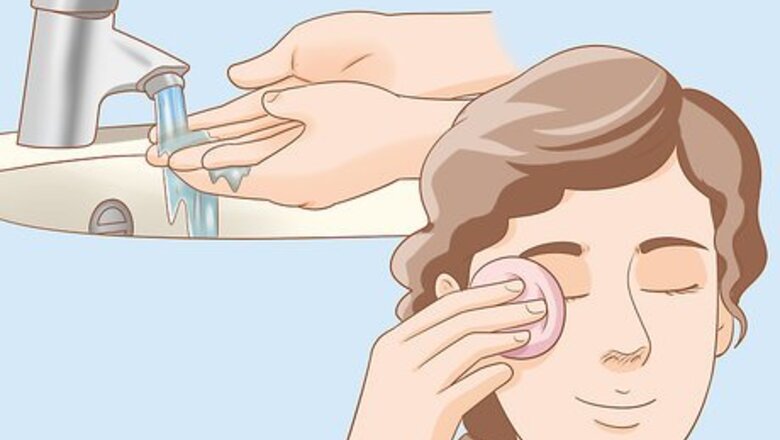
views
Inserting a Lens
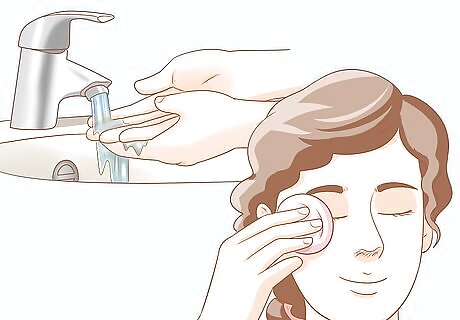
Wash your hands thoroughly and remove any eye makeup. To reduce the risk of an eye infection, never touch a scleral lens unless your hands are clean. Wash with a mild soap that doesn't contain moisturizers, and dry your hands with a clean, lint-free towel. If you wear any type of makeup around your eyes, remove it completely with a gentle cleanser—baby shampoo is a great option— and dry the area with a clean, lint-free towel. Otherwise, you might transfer makeup to the inside of the lens and trap it against your eye.
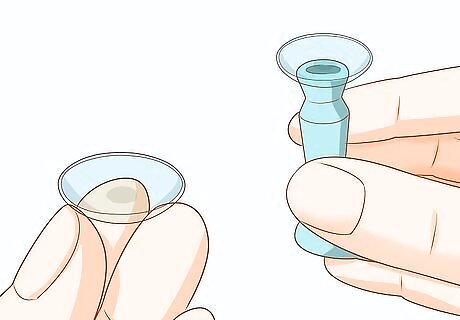
Pluck the lens from its case and stick it on a lens plunger. Use the pads of the fingertips—not the nails—of your index finger, middle finger, and thumb to grasp the lens around its edge and pull it from the case. Then, if you have a pair of color-coded lens plungers, press the suction cup of the “insertion” plunger onto the outside of the lens. Don't center the plunger on the lens, though—stick it right near the outside edge. If you don't have a lens plunger, maintain a “tripod” grip with your three fingertips. It's a bit more challenging but still very manageable to insert the lens with just your fingers. If you have two scleral lenses, it's important that you put the correct lens in the correct eye each time. The easiest way to keep track is to always insert and remove the same lens first—for example, always do the right-eye lens first.

Fill the lens with saline solution after checking it for damage. Take a close look all around the lens for chips, cracks, scratches, or stuck-on debris. If you find any of these, don't insert the lens—call your eye doctor instead. Otherwise, hold the lens underside-up so that you can fill it completely with saline solution. Your eye doctor will likely recommend that you use a specific type of saline solution with your scleral lenses. Don't use saline intended for typical contact lenses unless advised to do so. Try to keep the lens completely filled with saline until it touches your eye. If you spill more than a tiny amount, refill it.
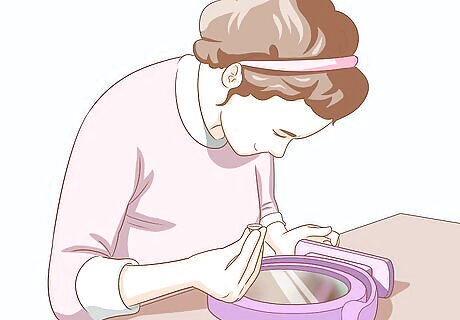
Lean forward over a table or counter and look towards your chin. Bend your upper body and neck so that your face is parallel to the table (if you're sitting) or countertop (if you're standing). While keeping your head in this position, try to look down at your chin so that your eyeballs are at your lower eyelids. Place a towel on the table or countertop. That way, if the lens falls, it won't break. You need to put in scleral lenses by “feel,” not by looking. However, you may want to lay a small mirror on the table or counter for the first few times you try this. Doing so may help you keep your head in the proper parallel position.
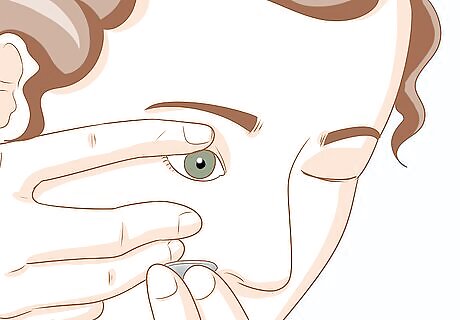
Peel back your eyelids with one hand, and insert the lens with the other. Use the thumb and forefinger of your free hand to push your eyelids as far out of the way as possible. Then, with the lens suctioned to the plunger or balanced on your “tripod” of fingers on your other hand, lift the lens straight up and press it to the middle of your eyeball. Some of the saline in the lens “bowl” will spill out as you press the lens against your eyeball. Don't worry about this. Scleral lenses are much larger than typical contacts, so you really need to peel back your eyelids to get them out of the way. It may take a few tries before you can easily center the lens over your eyeball—but you'll get the hang of it!
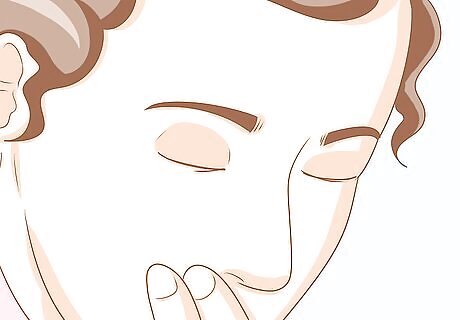
Pull away the plunger and/or your fingers as you close your eye over the lens. Allow your eyelids to relax slightly, so that they overlap the edges of the scleral lens—this, along with suction to your eyeball, will hold the lens in place. Then, pull away the lens plunger or your finger “tripod,” and remove your other hand as well so your eye can close fully.https://www.wikihow.com/Insert-and-Remove-a-Scleral-Lens Blink a few times, then look in a mirror. If the lens feels and looks like it's centered, and if you can see clearly and don't see any air bubbles beneath the lens, the lens is in the right place. Move on to the other lens if you have two of them. If the lens isn't centered or doesn't feel right in your eye, follow the instructions for removing a lens, then repeat the insertion procedure from the start (including washing your hands).
Removing a Lens
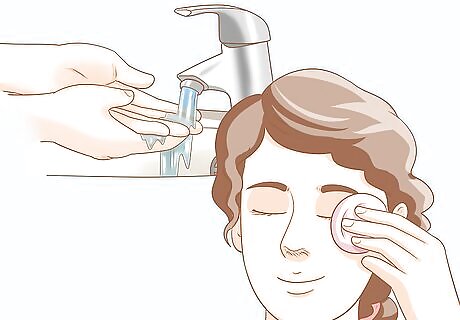
Wash your hands and remove any eye makeup. Follow the same procedures for cleaning your hands and washing away eye makeup as you did before inserting your lens or lenses. It's critical to keep bacteria and unwanted compounds out of your eyes, in order to reduce your chances of getting an eye infection. Use gentle cleansers, like a mild soap for your hands and baby shampoo for your makeup, and dry with a clean, lint-free cloth.
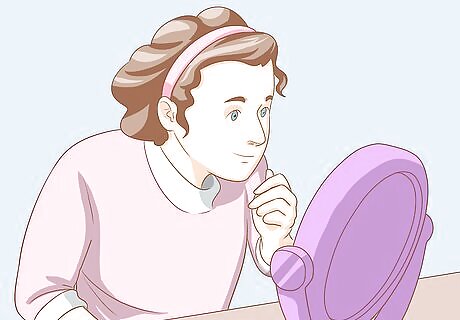
Look straight ahead into a mirror to locate the lens in your eye. Unlike inserting a lens, when you want to bend so that your face is pointed straight down, keep your head completely upright for lens removal. Look straight into the bathroom mirror, for instance, and place a towel over the sink and counter below so the lens doesn't break if it falls out.
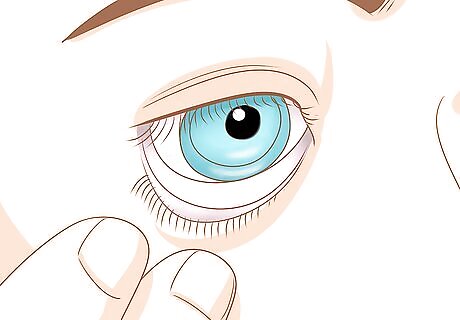
Peel back your eyelids until your can see all around the edge of the lens. Use your thumb and forefinger on one hand to push your eyelids as far up and down as possible. The entire circumference of the scleral lens should be visible when you look in the mirror.
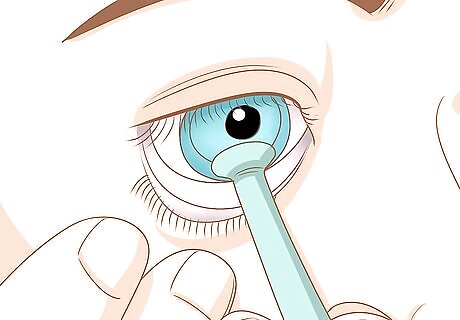
Stick the removal plunger to the center of the lens and pull it out (option 1). If your scleral lens or lenses came with a pair of color-coded lens plungers, use the “removal” plunger. Stick the suction cup of the plunger against the middle of the lens, then pull away slowly. If your eyelids are clear of the lens, it should come out with a bit of resistance but not much difficulty. You don't have to press the plunger hard against the lens (and your eye). However, do apply mild pressure so that the suction cup takes hold. If you're having trouble getting the suction cup to stick, dip it in some clean saline solution. If there's any saline solution inside the lens, drain it before you clean the lens.
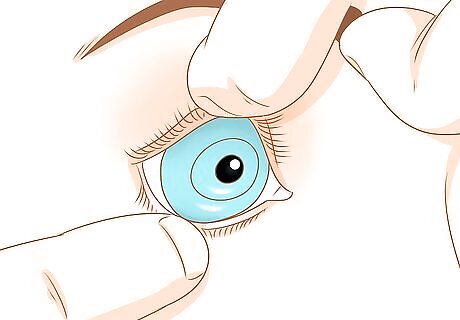
Use your fingers and an eyelid to wedge out the lens (option 2). While keeping your face aimed straight ahead, point your eyes downward. Press your index finger (and the top eyelid it's holding open) towards your nose, then press in against your eyeball, downward, and slightly outward toward your temple. This will cause your upper eyelid to slide underneath the top edge of the lens, causing its suction hold to break. The lens will fall out of your eye once the suction hold is broken. Either have your free hand ready to catch it, or place a thick towel on the countertop below you. This maneuver may take some practice to get right. If you have a removal plunger available, use it instead. Alternatively, you can perform the same maneuver with your lower eyelid, if that's easier for you.

Clean and store your lens as directed by your eye doctor. Your instructions may vary slightly, but you'll always need to rinse the lens with saline solution right after removing it from your eye. After that, expect to do the following: Apply your doctor's recommended lens cleaning solution to both sides of the lens, then rub both sides gently between the pads of your index fingertip and thumb tip—don't use your fingernails! Rinse the lens with saline solution again to remove the cleaning solution. Use a soft, clean tissue to gently dab the lens clean. Put the lens in its storage case when it is completely dry. Move on to removing your other lens, if you have lenses for both eyes.




















Comments
0 comment